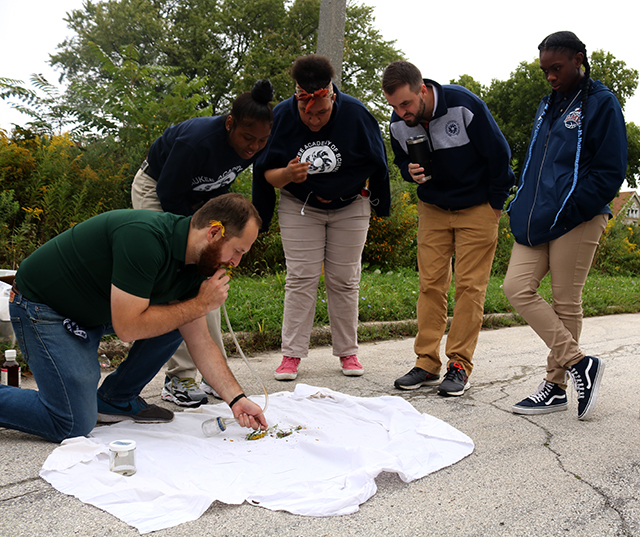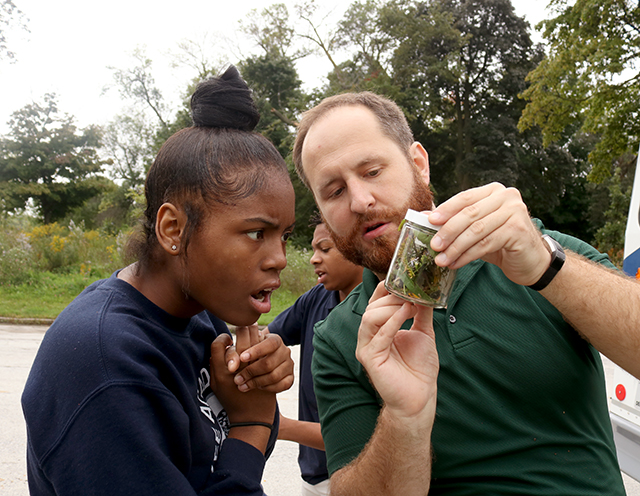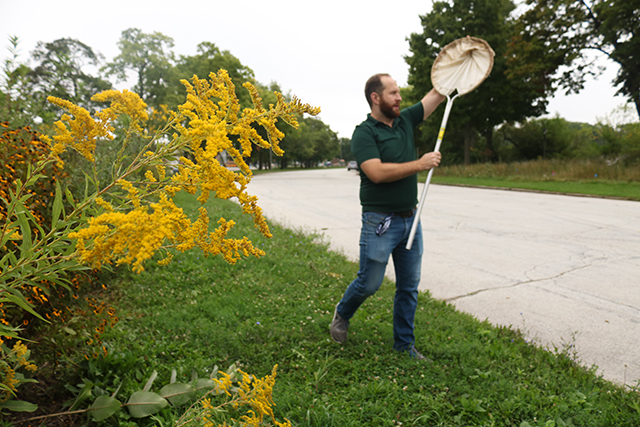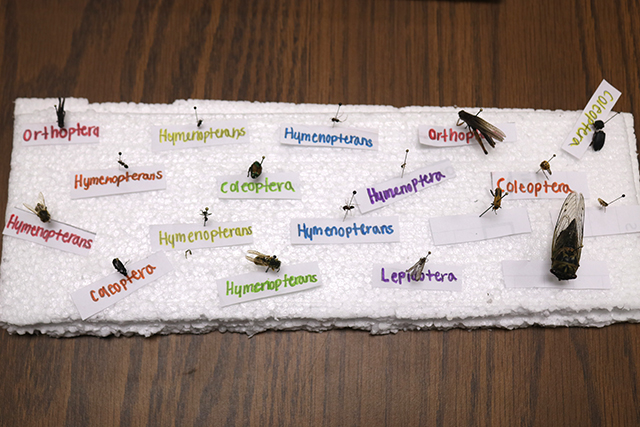
One day each fall, sophomores from the Milwaukee Academy of Science (MAS) travel to the Urban Ecology Center at Washington Park. These students are tasked with one goal: to collect as many insects as they can in the span of an hour and a half. Seems simple, you say? After all, insects are everywhere. Keep in mind, though, the perspective of the collectors: bees have stingers, grasshoppers have wings (surprise!), and sometimes spiders with very long legs are caught accidentally. For many of these high school students, this is a completely new experience with which they greet with grimaces, screams, immense uncertainty, and a decent dose of genuine fear.

Why bother bringing students here when the experience can be altogether frightening? MAS’s high school science teacher, Kevin Paprocki, had this to say:
"I love the habitat and diversity of insects you can find at Washington Park between the aquatic and prairie insects, and it is also very close to our school. My students don’t have a lot of exposure to living things. (…) And what I love about this field trip is it just kind of casts some light on the world of the unknown, and my students really start to realize there are so many things out there that they have absolutely never even entertained a thought of, and this just opens the door to any number of careers or fields of study that, again, they’ve never even thought of."
 It’s not difficult to fathom why this program becomes a favorite among the students: the excitement of discovery is put into their own hands. When they arrive at the prairie, Mr. Paprocki gives an energetic presentation of how to properly use giant sweep nets to capture insects hidden among the plants. Without further ado, the students are set off on their own with giant nets and collection containers!
It’s not difficult to fathom why this program becomes a favorite among the students: the excitement of discovery is put into their own hands. When they arrive at the prairie, Mr. Paprocki gives an energetic presentation of how to properly use giant sweep nets to capture insects hidden among the plants. Without further ado, the students are set off on their own with giant nets and collection containers! 
Back at school, the students will carefully curate a “pinned” insect collection by inserting a sharp pin through the insect body to display on a foam board. In this way, students will professionally preserve, identify, label, and study these insects throughout the semester as part of an in-depth project to understand how to classify organisms and intimately learn about insect morphology. For the past 9 years, any unique insect species that is pinned becomes part of the school’s permanent entomology collection, displayed in glass cases in the halls.

During the insect collection on the prairie, the transformation of the students is truly inspiring. When asked about how she felt about catching insects, Teddy Janicki had an exuberant reply:
"Exhilarated! We’ve gone as far as to catch bees, which isn’t something that the everyday teenager can fully say that they’ve done—not on purpose or without it being stuck in their arm, obviously. So that’s one thing…The experience is really exciting because you catch it, and then there’s the enticing moment of figuring out what it is that you caught, and when you do figure it out, everyone’s “Aaahhhh!!!” Massive scream moment. There have been several of those."
Many students spoke of feeling nervous and scared at first, but then faced and conquered their fears. Other common themes among the students included how fun insect collecting at the prairie was and how they loved that it was “hands-on” learning.
Sophomore Desmond Hannah also reflected on how important this interactive approach was: "When I first heard we were going to do this project, I didn’t really want to do it, but now since I collected all these bugs and experience more things, I would like to do this again."
The stories and experiences the students shared align with what Mr. Paprocki witnesses each and every year. "Ultimately, when they graduate after four years with us…a lot of students will say that the insect collection was maybe the favorite thing they’ve ever done."

These simple words capture it all:
Zariah Washington: "Yeah. I like reading, but who wants to sit in a classroom and read all day when you can do this?"
Teddy Janicki: "Yeah, just get outside!"
Zariah Washington: "Yeah, give us a little freedom!"
Here at the Urban Ecology Center, we couldn’t agree more.





